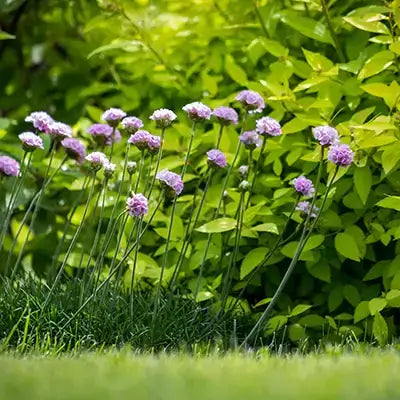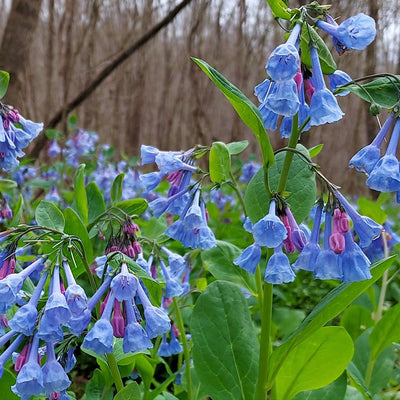Welcome to the wonderful world of gardening, where the colors of nature come to life right before your eyes! Whether you are a seasoned green thumb or a beginner just starting, there's nothing quite like the feeling of planting your garden and watching it flourish.
If you want to add color and texture to your garden, shade perennials can be a fantastic choice. These hardy plants are known for their ability to thrive in shady areas, bringing life and beauty to spots that might otherwise go unnoticed. But with such wide varieties, how do you know which shade perennials suit your garden?
So grab your gardening gloves, and let's dive in to learn all!
The Best 7 Shade Perennials For Your Garden
We'll introduce you to some of our favorite shade perennials, including Yellow Trillium, Wild Geranium, Virginia Spring Beauty, Virginia Bluebells, Twinleaf, Squirrel Corn, and Solomon's Seal Plant.
Yellow Trillium
This beautiful plant is native to eastern North America and is known for its large, yellow flowers that bloom in the spring. It's a great addition to woodland or shade gardens, as it thrives in moist, well-drained soil and partial to full shade. Yellow Trillium is a long-lived perennial that will reward you with beautiful blooms year after year.

Wild Geranium
Another native plant, Wild Geranium, is a hardy perennial that produces beautiful, pinkish-purple flowers in the spring and summer. It prefers partial shade and well-drained soil, and it's an excellent choice for rock gardens, borders, and woodland gardens. Wild Geranium is also a favorite of butterflies and other pollinators.

Virginia Spring Beauty
As its name suggests, this plant is a true beauty in the springtime, producing delicate pink and white flowers that bloom in clusters. Virginia Spring Beauty prefers moist, well-drained soil and partial shade, and it's a great addition to shade gardens, woodland gardens, and naturalized areas. It's also a favorite of bees and butterflies.

Virginia Bluebells
If you're looking for a true showstopper, look no further than Virginia Bluebells. This native plant produces stunning, bell-shaped flowers in shades of blue and pink in the springtime. It grows best in moist, well-drained soil and partial shade, and it's an excellent choice for woodland gardens, shade gardens, and naturalized areas. Virginia Bluebells are also a favorite of hummingbirds and other pollinators.

Twinleaf
This unique plant is known for its unusual, heart-shaped leaves and delicate white flowers that bloom in the spring. Twinleaf prefers moist, well-drained soil and partial to full shade, and it's an excellent choice for woodland gardens and naturalized areas. It's also a favorite of native bees and other pollinators.

Squirrel Corn
This adorable plant is named for its small, corn-like bulbs, a favorite food of squirrels. Squirrel Corn produces delicate white or pink flowers in the spring and prefers moist, well-drained soil and partial to full shade. It's an excellent choice for woodland, shade, and naturalized areas.

Solomon's Seal Plant
Last but not least, we have Solomon's Seal Plant, a graceful and elegant plant that produces delicate, white flowers in the spring and summer. It prefers partial to full shade and moist, well-drained soil, and it's an excellent choice for woodland gardens, shade gardens, and borders. Solomon's Seal Plant is also a favorite of hummingbirds and other pollinators.

Factors To Consider When Selecting Shade Perennials
Factors to select shade perennials are, but the most prominent ones are given below. Devoid of them, you can not get the expected results from your perennial plants. So, let us learn quickly.
Amount of Shade
Full-shade areas receive no direct sunlight, while partial-shade areas receive a few hours of sunlight per day. Make sure to choose shade perennials appropriate for the shade level in your garden.
Soil Type
Shade perennials will perform best in soil that matches their preferred pH level. Acidic soil has a pH below 7.0, while alkaline soil has a pH above 7.0. Be sure to choose plants that will thrive in your soil type.
Plant Size
Tall plants can add size and structure to your garden, while short plants can provide ground cover and fill in empty spaces. Medium-sized plants are a good option for adding variety to your garden.
Bloom Time
Early bloomers will start flowering in the spring, mid-season bloomers will bloom in the summer, and late bloomers will provide color in the fall. Choose various plants with different bloom times to ensure a colorful garden all season.
Tips for Choosing the Best Shade Perennials for Your Garden
If you want to add color and texture to your garden, shade perennials are a great option. But with such wide varieties, figuring out where to start can take time. Here are some useful tips to help you choose the best shade perennials for your garden.
Research
Before you start shopping for shade perennials:
- Do your research.
- Find out which types of plants thrive in your climate and soil type.
- Consider the amount of shade in your garden.
Plan Your Garden
Do you prefer a wild cottage garden feel or a more formal, structured look? Also, consider the colors and textures of the plants you choose. By planning, you can create a beautiful, cohesive garden that will be a joy to look at all season long.
Choose A Variety of Plants
Choose a variety of plants with different heights, textures, and colors. It will add depth and interest to your garden and create a more natural look. Consider planting groundcovers, such as Hosta's or ferns, along with taller plants like astilbes or hellebores.
Foliage of the Plants
One of the most striking features of shade perennials is their foliage. These plants' leaves come in various colors, ranging from deep greens to vibrant yellows and reds. Some shade perennials also have variegated leaves featuring two or more colors on the same leaf. It can create a unique and eye-catching look in your garden.
Texture
The texture is another essential characteristic of shade perennials. Some have soft, feathery foliage, while others have coarse, leathery leaves. The texture of the foliage can help create depth and interest in your garden and can be especially striking when combined with other surfaces, such as smooth stones or rough bark.
Shape
When it comes to flowers, shade perennials have plenty of options. The shape of the flowers can range from simple and elegant to complex and showy. Some shade perennials have bell-shaped flowers, while others have spiky blooms or rounded petals. This variety of shapes can help create a dynamic and exciting garden design.
Color
Color is also an essential characteristic of shade perennials. These plants can have flowers in almost any shade, from pure white to deep purple and everything in between. The color of the flowers can help set the tone for your garden, whether you're looking for a calm and serene space or a vibrant and energetic one.
Fragrance
The fragrance is another feature that some shade perennials offer. Some flowers emit a sweet, delicate scent, while others have a strong, pungent aroma. Consider the fragrance of your shade perennials to create a sensory experience in your garden.
Wrapping Up
And there you have it - our guide on choosing the best shade perennials for your garden! We hope you've found some helpful tips and inspiration to start your gardening journey.
Remember, gardening is all about trial and error, so don't be afraid to try new plants and experiment with different combinations. With patience and care, your garden will thrive and become a beautiful oasis you can enjoy for years.
So get out there and start planting! And don't forget to take a moment to sit back, relax, and enjoy the fruits of your labor - after all, that's what gardening is all about.


